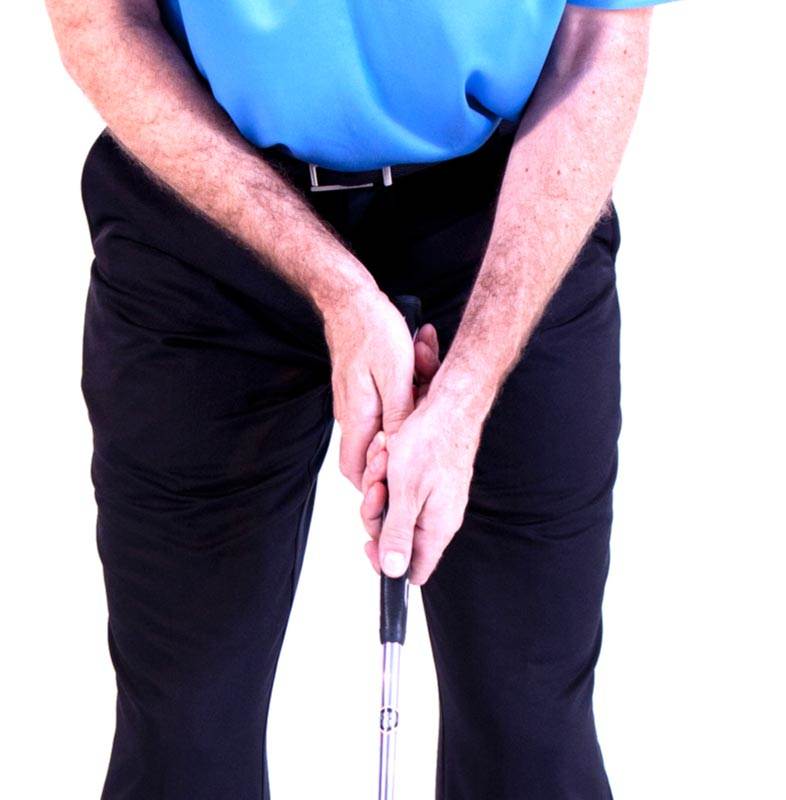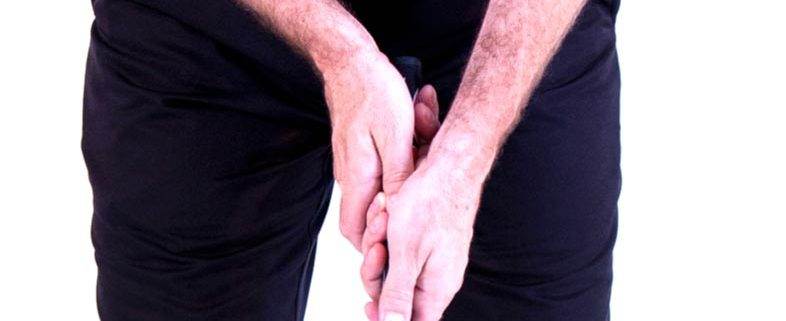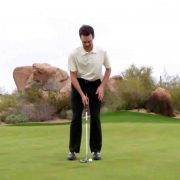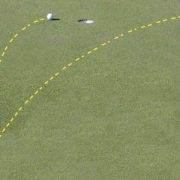The Most Common Putting Grips

Although putting is perhaps more art than science, there are some techniques you need to understand in order to be successful on the greens. Putting certainly allows plenty of room for personal preference, but I’d like to go over some methods and considerations when we grip the club.
The three most common grips with a standard length putter are the reverse overlap, left-hand low, and the claw. I would say that one common thread through each of these grips is grip pressure. You should be holding the club as softly as you can throughout your entire putting stroke, allowing the putter head to swing freely. Most players grip the club too tightly, and as a result lose feel and accuracy.
With the reverse overlap, start by placing your left hand onto the end of the grip, with your left thumb directly on top of the shaft along the beveled edge of the grip. Bring your right hand onto the shaft from the side, with the palm facing the target, and your right thumb also on top of the grip along the beveled edge. Next, take your left index finger and place it up on top of the pinky of your right hand. Your hands should be close enough together so that your right hand covers your left thumb. Your right hand should have all fingers on the club, while your left hand has all fingers except for the forefinger on the club. I would venture to say that this is the most popular putting grip in the recent history of golf.
The left-hand low grip is essentially the same as the reverse overlap, except the positions of the left and right hands are reversed. With this grip, as its name implies, the left-hand sits lower on the club than the right. Many players will choose to overlap their grip with either their left pinky on top or their right forefinger on top. This tends to unify the hands, bringing them closer together, and allowing them to work as a unit. Players using this grip generally feel like their shoulders are more square to the target line, and they are less likely to allow the putter to pass their hands, flip, or rotate through the putting stroke.
Another increasingly popular grip in today’s game is called the claw. Although there are variations in each of these grips, with the claw, the left-hand is generally placed on the club with the thumb along the beveled edge and all fingers on the grip. The right-hand in this grip is turned upside down so that the palm of the hand faces the ground. Think of this hand as holding the grip as one would hold a pencil. That being said, some players like to have one finger on top of the shaft, two fingers, or even all four fingers. This grip tends to restrict club face rotation, helping players feel as though they can get the ball rolling on line more reliably. Once again, there is plenty of room for personal variation in each of these putting grips. These are all just rules of thumb,
In summary, putting, perhaps more so than any other aspect of the game, is just as much art as it is science. While it’s important to make yourself comfortable over the ball, a proper grip will help improve your putting tremendously. Rule number one is to grip the club softly. Squeezing the club too tightly reduces feel and accuracy. The reverse overlap has both thumbs parallel to the shaft, along the beveled edge of the putter grip, with the left forefinger overlapping on top of the right pinky. Left-hand low is very similar, but with the right hand above the left hand on the handle. The claw grip has a normal left-hand, but the right-hand is flipped upside down, holding the club like a pencil.









